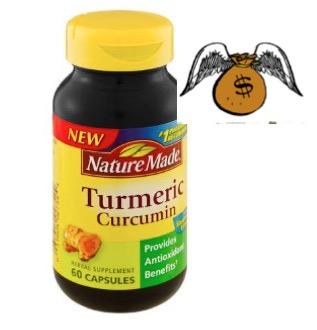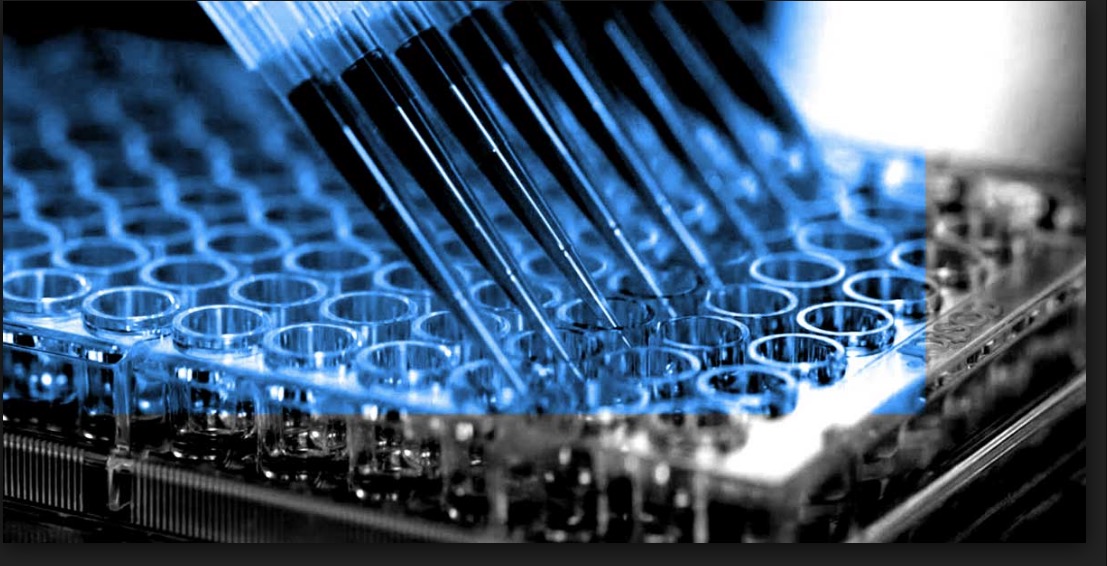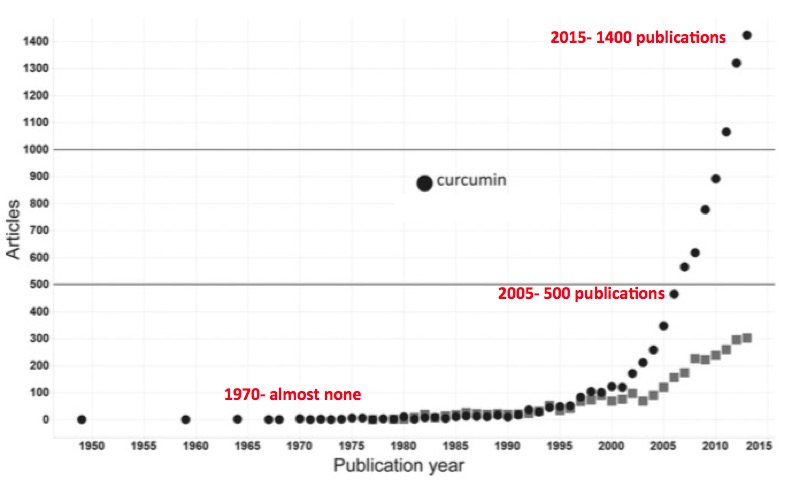
It never stops. As regularly as the earth rotates (and about as often too), there will be some shyster trying to sell you something that will take all of your troubles away. And they are doing quite well in the process of separating you from your money. They are super-good at this, but the products inevitably end up being worthless. Ask Dr. Oz; he knows the super-drill.
Herbs and spices seem to be particular effective vehicles for the transfer of funds, probably because they're "natural," so eating them will enable you to live long enough to see the New York City second avenue subway (1) be completed.
This time, however, we're not talking about a mere super food. It's the miracle spice turmeric. But the game is always the same:
- Pick out something to hype
- Make up a bunch of health benefits based on nothing
- Hype that 'nothing'
- Extract money from suckers until they realize that is worthless
- Go to step one
Turmeric was touted for its anti-inflammatory properties, as an antioxidant (show me something that isn't), and was supposed to prevent cancer and Alzheimer's. I have seen claims for its ability to improve your bowling average and decrease waiting time on the tarmac at LaGuardia Airport, but these remain unsubstantiated.
But, it may be time to send turmeric to the tomb-eric, thanks to a new review paper in the Journal of Medicinal Chemistry. In an article entitled "The Essential Medicinal Chemistry of Curcumin (2)" Kathryn M. Nelson of the Department of Medicinal Chemistry, Institute for Therapeutics Discovery and Development at the University of Minnesota, and colleagues from two other universities, said "not so fast." It turns out that the quality of the "studies" done in support of the spice's benefits seem to be quite bland, but at least there were a lot of them.
Nelson's group examined more than 120 studies and found a big, fat mess.
The likely false activity of curcumin in vitro and in vivo has resulted in >120 clinical trials of curcuminoids against several diseases. No double-blinded, placebo controlled clinical trial of curcumin has been successful.
So, what's all the hype about? That's easy. The claims of medicinal benefits are derived from in vitro testing, which is a notch above worthless for determining whether a test compound will become a drug. In vitro assays are, at best, a guide for establishing whether a particular experimental compound is "hitting" the desired target, and whether it can penetrate cells. Even the most potent compounds from in vitro screens have only a remote possibility of becoming a drug. The journey from a tiny glass well to efficacy in human is almost endless. There are so many things that go wrong.
A fair analogy would be predicting the winner of the New York Marathon based on who is in the lead after one minute.

An in vitro test. Dilute solutions of thousands (sometimes more than one million) chemical compounds are kept in plates and stored in freezers. When an assay is run, these are thawed and samples taken for the test. The process is completely automated. Photo: M B Laboratories.
It turns out that the number of claims turmeric's benefit for (fill in blank) is enormous. This is not surprising, given the amount of research that has been done in this area, as demonstrated by the graph below:

Number of published papers about curcumin (black circles) by year. Source: J. Med. Chem.
Kathryn M. Nelson et al, Journal of Medicinal Chemistry- J. Med. Chem., January 11, 2017. Online
(Red text added for clarity)
The list of flaws that the group found in turmeric research is both amazing and revealing. It is no wonder why the stuff is useless:
- "[M]any researchers have described the potential “dark side of curcumin”: the drawbacks noted for curcumin include its poor pharmacokinetic/pharmacodynamic (PK/PD) properties (3), low efficacy in several disease models, and toxic effects under certain testing conditions."
- "Web sites [have touted] the use of curcumin (and its primary commercial source, turmeric) as an anticancer agent, a therapeutic for Alzheimer’s disease, a treatment for hangovers, erectile dysfunction, baldness, hirsutism, fertility-boosting and contraceptive." (4)
- [Curcumin is like] a missile that has shown excellent promise in early testing (in vitro), even though this testing may have been bedeviled by design problems that led to several misfires. [Its] structure suggests that it might be unstable in a biological setting, and in fact, it is: both its in vitro and in vivo stabilities are abysmal [half-life of less than five minutes] relative to commercial drugs."
- It is important, therefore, that any manuscript or research proposal that is based on the bioactivity [of curcumin] or its analogues addresses additional characteristics of this natural product: its chemical instability, poor ADME (5) properties, potential toxicological effects, and its lack of success to date in the clinic."
- And perhaps most important (emphasis mine)—Curcumin [belongs to a class of] compounds that have been observed to show activity in multiple types of assays by interfering with the assay readout rather than through specific compound/target interactions. (6)
So, the following cannot be surprising: "One common theme in these reports [of activity of curcumin] is particularly disturbing: published bioactivity data of [the compound] are typically not evaluated critically before it is used to justify further research in an area. This is especially troubling when the original activity reports have been retracted."
There is so much more damning in the J. Med. Chem. paper that this article could go on for a very long time. But the issues discussed above are more than enough to tell us what we really need to know: Garbage products with false claims from garbage science are picking our pockets to the tune of $30 billion per year. It is very easy to observe some kind of activity in an automated in vitro assay, and very difficult to turn that into a drug that works. Any claim that is made based on in vitro activity alone is going to be false virtually all of the time.
Welcome to the dietary supplements industry.
Notes:
(1) The second avenue subway is a running New York joke. It was started in 1972, discontinued due to lack of funding, and finally opened on December 31, 2016. "Opened" is not exactly correct. Of the the two dozen stations that are planned, only three of them opened. It is essentially useless at this time. The cost so far has been $4.5 billion. It is unlikely that anyone who is reading this will be alive when it is finished. Welcome to New York.
(2) Turmeric is a plant in the ginger family. Curcumin is the the principal chemical found in the plant.
(3) Pharmacokinetics is defined as what the body does to the drug. Pharmacodynamics is what the drug does to the body. Both are crucial in new drug discovery.
(4) When multiple, unrelated claims are made for any therapy it should raise a whole bunch of red flags. No real drug does this.
(5) ADME (absorption, distribution, metabolism and excretion) are the properties that determine whether an experimental drug that performs well in "test tubes" will actually work in people. ADME is the graveyard of most failed drugs.
(6) There are known classes of chemicals that "light up" almost every test. Chemists call these compounds promiscuous, and they are the bane of drug discovery. Many programs have wasted much time following up screening leads that appear to have a particular biological activity, only to discover later that the screening lead screws up the assay, giving a false positive. Uber chemistry blogger Derek Lowe has discussed this phenomenon a number of times.



